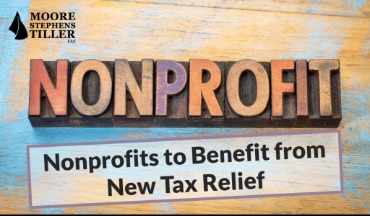
The exclusion can be up to 75% for stock acquired after February 17, 2009, and up to 100% for stock acquired after September 27, 2010. The exclusion can be up to 60% for certain empowerment zone business stock for gain attributable to periods on or before December 31, 2018. The 60% exclusion doesn’t apply to gain attributable to periods after December 31, 2018.
Brady Corporation Reports Record EPS in its Fiscal 2023 Fourth ... - GlobeNewswire
Brady Corporation Reports Record EPS in its Fiscal 2023 Fourth ....
Posted: Tue, 05 Sep 2023 11:00:48 GMT [source]
Last year, you paid a total of $10,000 mortgage interest and $2,000 real estate taxes for the entire property. You can deduct $5,000 mortgage interest and $1,000 real estate taxes on Schedule E. If you itemize your deductions, include the other $5,000 mortgage interest and $1,000 real estate taxes when figuring the amount you can deduct on Schedule A. You can’t deduct depreciation or insurance for the part of the year the property was held for personal use.
Publication 527 ( , Residential Rental Property
The rental loss was from the rental of a house Mike owned. Mike had advertised and rented the house to the current tenant himself. If you are married, determine whether you materially participated in an activity by also counting any participation in the activity by your spouse during the year. Do this even if your spouse owns no interest in the activity or files a separate return for the year. Losses from holding real property (other than mineral property) placed in service before 1987 aren’t subject to the at-risk rules. If you elect to use the straight line method for 5-, 7-, or 15-year property, or the 150% DB method for 5- or 7-year property, use the tables in Appendix A of Pub.

Net salvage is the salvage value of property minus what it costs to remove it when you dispose of it. You can choose either salvage value or net salvage when you figure depreciation. You must consistently use the one you choose and the treatment of the costs of removal must be consistent with the practice adopted. However, if the cost to remove the property is more than the estimated salvage value, then net salvage is zero. It is important for you to accurately determine the correct salvage value of the property you want to depreciate.
Half Year Convention for Depreciation: What It Is, How to Use It
You must increase the basis of any property by the cost of all items properly added to a capital account. If you placed rental property in service before 1987, you are using one of the following methods. You can deduct the rent you pay for property that you use for rental purposes. If you buy a leasehold for rental purposes, you can deduct an equal part of the cost each year over the term of the lease. You can begin to depreciate rental property when it is ready and available for rent.
Medical equipment firm Rotech Healthcare explores sale, sources say - Reuters
Medical equipment firm Rotech Healthcare explores sale, sources say.
Posted: Thu, 31 Aug 2023 19:42:00 GMT [source]
Your adjusted basis for depletion is also based on the depletion unit of timber in the account used for the cut timber, and should be figured in the same manner as shown in section 611 of the Internal Revenue Code and the related regulations. Farmers who cut timber on their land and sell it as logs, firewood, or pulpwood usually have no cost or other basis for that timber. These sales constitute a very minor part of their farm businesses. In these cases, amounts realized from such sales, and the expenses of cutting, hauling, etc., are ordinary farm income and expenses reported on Schedule F (Form 1040). Both the buyer and seller involved in the sale of business assets must report to the IRS the allocation of the sales price among section 197 intangibles and the other business assets.
Handling Depreciation for Year of Sale
If you dispose of residential rental or nonresidential real property, figure your depreciation deduction for the year of the disposition by multiplying a full year of depreciation by a fraction. The numerator of the fraction is the number of months (including partial months) in the year that the property is considered in service. You must apply the table rates to your property's unadjusted basis each year of the recovery period. Unadjusted basis is the same basis amount you would use to figure gain on a sale, but you figure it without reducing your original basis by any MACRS depreciation taken in earlier years.
Depreciation recapture is calculated by subtracting the adjusted cost basis from the sale price of the asset. The adjusted cost basis is the original price paid to acquire the asset minus any allowed or allowable depreciation expense incurred. If, for example, the adjusted cost basis is $2,000 and the asset is sold for $3,000, there is a gain of $1,000 to be taxed. The rate it will be taxed depends on the taxpayer’s income tax rate and whether the asset is real estate. Instead, assume the equipment in the example above was sold for $12,000. In that case, the entire accumulated depreciation of $8,000 is treated as ordinary income for depreciation recapture purposes.
How Rental Property Depreciation Works
Businesses or taxpayers often use depreciation to write off the value of a fixed asset they’ve purchased. This allows taxpayers to benefit gradually and earn revenue from the asset’s value. The value the asset loses represents its depreciation expense. If the asset’s value slowly decreases over time, rather than instantly, you can still earn revenue from it. This enhances net income and makes your investment more profitable.
- Therefore, you cannot elect a section 179 deduction or claim a special depreciation allowance for the item of listed property.
- If you can depreciate the cost of computer software, use the straight line method over a useful life of 36 months.
- The partnership's taxable income from the active conduct of all its trades or businesses for the year was $1,030,000, so it can deduct the full $1,030,000.
- Generally, a transfer (other than by sale or exchange) of property from a debtor to a bankruptcy estate is not treated as a disposition.
Sandra and Frank must adjust the property's basis for the casualty loss, so they can no longer use the percentage tables. Their adjusted basis at the end of 2022, before figuring their 2022 depreciation, is $11,464. They figure that amount by subtracting the 2021 MACRS depreciation of $536 and the casualty loss of $3,000 from the unadjusted basis of $15,000. They must now figure their depreciation for 2022 without using the percentage tables.
In other words, the depreciation on the manufacturing facilities and equipment will be attached to the products manufactured. When the goods are in inventory, some of the depreciation is part of the cost of the goods reported as the asset inventory. When the goods are sold, some of the depreciation will move from the asset inventory to the cost of goods sold that is reported on the manufacturer's income statement. Depreciation is the devaluing of an asset over time due to age or wear and tear. … Alas, there’s no avoiding this, just like the effects of aging on the human body. Thankfully, the IRS lets you deduct this loss of value from your business income.

If you use this method, you need to figure depreciation for the vehicle. Written documents of your expenditure or use are generally better evidence than oral statements alone. A written record prepared at or near the time of the expenditure or use has greater value as proof of the expenditure or use. However, some type of record containing the elements of an expenditure or the business or investment unfiled tax return information use of listed property made at or near the time and backed up by other documents is preferable to a statement prepared later. For listed property, records must be kept for as long as any excess depreciation can be recaptured (included in income). If you acquire personal property that has a useful life of 3 years or more, you can use an amount for salvage value that is less than your actual estimate.
Published by: yson001@gold.ac.uk in Uncategorized